This article was medically reviewed by Adebola Dele-Michael, MD, FAAD. Dr. Adebola Dele-Michael is a Board Certified Dermatologist and the Owner of Radiant Skin Dermatology and Laser, PLLC in Manhattan, New York. With over 12 years of experience, she specializes in general and cosmetic dermatology, specifically, using lasers and energy devices in treating skin of color.She is an assistant professor of Dermatology at The Icahn School of Medicine at Mount Sinai in Manhattan, NYC. Dr. Dele-Michael holds a BS in Biochemistry from Stony Brook University and an MD from The University of Rochester School of Medicine and Dentistry. She completed her Dermatology Residency at Wayne State University School of Medicine, where she was also chief resident.
There are 13 references cited in this article, which can be found at the bottom of the page.
This article has been viewed 360,104 times.
Laser hair removal is a popular option for people who are tired of waxing, tweezing, or shaving unwanted body hair. In recent years, it has become one of the most commonly performed cosmetic procedures. Following a simple after-care process, including protecting the skin and choosing the right products, will help ensure that the treated area heals quickly and completely.
Steps
Treating the Initial Discomfort
-
1Apply ice or cold packs to numb the treated area. After laser hair removal, you may feel some minor discomfort like a mild sunburn. The area might also be slightly swollen or red. Ice and cold packs are an easy way to ease this pain. You can use ice or cold packs immediately after the laser treatment, so put them in the freezer before your appointment.[1]
- Wrap the ice or cold pack in a towel before you use it; directly applying the pack to the skin may cause more irritation.
- Ice the treated area for up to 10 minutes at least 3 times a day until the discomfort is gone. Wait at least an hour before reapplying the ice or cold pack. If you leave the ice pack on for too long, it will restrict the blood flow to that area and slow down your healing time.
-
2Try aloe vera to soothe any redness or swelling. Many people say that aloe vera helps to reduce skin discomfort and ease redness and swelling. It is easy to find in the skincare or sunblock aisle in drug stores; make sure to keep the aloe vera gel refrigerated for the best results.[2] If possible, use fresh aloe vera gel because it is more effective.[3]
- Apply the aloe vera directly to the area where you had the hair removed. Wait several minutes for it to absorb into your skin. After the gel begins to dry, you can remove the excess aloe vera with a soft, damp, washcloth. However, leaving a small amount of aloe vera on your skin is also safe.[4] Repeat this process 2-3 times a day until the pain, redness, and swelling is gone.
Advertisement -
3Use over-the-counter painkillers if the ice packs and aloe vera aren’t effective. Most people find that using ice packs and applying aloe vera ease their discomfort, but if the pain persists, over-the-counter (OTC) painkillers can be taken.[5]
- Use the OTC painkillers only as directed. You should only have to take painkillers for about a day after the laser treatment. If the pain persists after 24 hours, call your doctor. Aspirin is not recommended after laser hair removal as it thins the blood and may increase healing time.[6]
Protecting Your Skin Immediately Following Hair Removal
-
1Protect the treated area from sunlight. The sunlight will irritate the treated area and possibly make the discomfort and redness worse. The easiest way to prevent this is to not expose the treated area to direct sunlight. If you go outside, make sure you cover the area with clothing. If you had your face treated, wear a hat to provide sun protection.[7]
- Artificial UV sources—such as tanning booths—should also be avoided until the skin has completely healed and all discomfort, swelling, and redness has disappeared.
- Direct sun exposure should be avoided for a minimum of two weeks after the laser treatment, but some health care providers recommend avoiding the sun for 6 weeks.[8]
- Use a sunscreen with a SPF of at least 30. Make sure you reapply the sunblock often, especially if you get the skin wet or sweat profusely.[9]
-
2Avoid exposing your skin to heat sources until it has entirely healed. Laser treatment works by using heat to destroy the hair follicles; exposing the treated area to additional heat can increase the skin irritation. Hot water, saunas, and steam rooms should all be skipped for a minimum of 48 hours after the treatment.[10]
- You can bathe the treated area; however, you should stick to cool or warm water to help the area heal as quickly as possible.
-
3Avoid strenuous exercise for at least 48 hours after treatment. Raising the body's temperature through exercise can also irritate the treated area. Wait at least 48 hours before strenuously exercising.[11]
- Milder exercise, such as walking, is okay. Just try to avoid becoming overheated.
Choosing the Right Post-Treatment Products
-
1Clean the treated area with a mild cleanser. It is important to keep your skin clean. You should use a mild cleanser, or a cleanser designed for sensitive skin to clean the area. You can shower or bathe as normal, just make sure to keep the water temperature cool.[12]
- You can wash the treated area 1-2 times a day after the treatment. If you wash more frequently, you may increase the redness or discomfort. After 2-3 days, if the redness has disappeared, you can return to your normal skin routine.
-
2Pick a moisturizer designed for sensitive skin. After laser hair removal, your skin will be more sensitive than normal. It will also probably feel dry, especially as it heals. Applying a moisturizer designed for sensitive skin to the treated area will alleviate the dry feeling without causing further irritation.[13]
- After the initial treatment, you can apply moisturizer 2-3 times a day as needed. Just be careful to apply it gently; don’t irritate the treated area by rubbing too vigorously.
- Use a non-comedogenic moisturizer. This will help keep the pores clear and promote healing.
-
3Avoid makeup and harsh skin products. If you had hair removed from your face, makeup should not be applied as it may irritate the skin further. It is best to use as little product as possible on your face after treatment.[14]
- After 24 hours, if the redness is gone, makeup can be applied.
- You should also avoid topical facial medications such as anti-acne creams. After 24 hours, if the redness has disappeared, you can start using these products again.
Expert Q&A
-
QuestionCan I do my skincare routine after laser hair removal?
 Adebola Dele-Michael, MD, FAADDr. Adebola Dele-Michael is a Board Certified Dermatologist and the Owner of Radiant Skin Dermatology and Laser, PLLC in Manhattan, New York. With over 12 years of experience, she specializes in general and cosmetic dermatology, specifically, using lasers and energy devices in treating skin of color.She is an assistant professor of Dermatology at The Icahn School of Medicine at Mount Sinai in Manhattan, NYC. Dr. Dele-Michael holds a BS in Biochemistry from Stony Brook University and an MD from The University of Rochester School of Medicine and Dentistry. She completed her Dermatology Residency at Wayne State University School of Medicine, where she was also chief resident.
Adebola Dele-Michael, MD, FAADDr. Adebola Dele-Michael is a Board Certified Dermatologist and the Owner of Radiant Skin Dermatology and Laser, PLLC in Manhattan, New York. With over 12 years of experience, she specializes in general and cosmetic dermatology, specifically, using lasers and energy devices in treating skin of color.She is an assistant professor of Dermatology at The Icahn School of Medicine at Mount Sinai in Manhattan, NYC. Dr. Dele-Michael holds a BS in Biochemistry from Stony Brook University and an MD from The University of Rochester School of Medicine and Dentistry. She completed her Dermatology Residency at Wayne State University School of Medicine, where she was also chief resident.
Board Certified Dermatologist Not all of it! You don't want to be doing any exfoliating treatments and you definitely don't want to be scrubbing your skin. Instead, use a gentle cleanser for your skin, like a hyaluronic acid serum. In general, steer clear of any product or treatment that could potentially irritate your skin.
Not all of it! You don't want to be doing any exfoliating treatments and you definitely don't want to be scrubbing your skin. Instead, use a gentle cleanser for your skin, like a hyaluronic acid serum. In general, steer clear of any product or treatment that could potentially irritate your skin. -
QuestionWhat type of care should I follow after a laser hair removal treatment? Are there specific products I should use?
 Sarah Gehrke, RN, MSSarah Gehrke is a Registered Nurse and Licensed Massage Therapist in Texas. Sarah has over 10 years of experience teaching and practicing phlebotomy and intravenous (IV) therapy using physical, psychological, and emotional support. She received her Massage Therapist License from the Amarillo Massage Therapy Institute in 2008 and a M.S. in Nursing from the University of Phoenix in 2013.
Sarah Gehrke, RN, MSSarah Gehrke is a Registered Nurse and Licensed Massage Therapist in Texas. Sarah has over 10 years of experience teaching and practicing phlebotomy and intravenous (IV) therapy using physical, psychological, and emotional support. She received her Massage Therapist License from the Amarillo Massage Therapy Institute in 2008 and a M.S. in Nursing from the University of Phoenix in 2013.
Registered Nurse You will want to be gentle with your skin because it may be sensitive after laser hair removal. A fragrance free noncomedogenic wash and a moisturizer will be perfect until your redness subsides. A hyaluronic acid formula might be a good choice. You can always ask your health care provider what specific products they recommend.
You will want to be gentle with your skin because it may be sensitive after laser hair removal. A fragrance free noncomedogenic wash and a moisturizer will be perfect until your redness subsides. A hyaluronic acid formula might be a good choice. You can always ask your health care provider what specific products they recommend. -
QuestionDoes clindamycin cause photosensitivity?
 Sarah Gehrke, RN, MSSarah Gehrke is a Registered Nurse and Licensed Massage Therapist in Texas. Sarah has over 10 years of experience teaching and practicing phlebotomy and intravenous (IV) therapy using physical, psychological, and emotional support. She received her Massage Therapist License from the Amarillo Massage Therapy Institute in 2008 and a M.S. in Nursing from the University of Phoenix in 2013.
Sarah Gehrke, RN, MSSarah Gehrke is a Registered Nurse and Licensed Massage Therapist in Texas. Sarah has over 10 years of experience teaching and practicing phlebotomy and intravenous (IV) therapy using physical, psychological, and emotional support. She received her Massage Therapist License from the Amarillo Massage Therapy Institute in 2008 and a M.S. in Nursing from the University of Phoenix in 2013.
Registered Nurse Oral clindamycin is not classified as a drug that causes photosensitivity. Topical clindamycin has possible side effects such as dry or peeling skin, which may make your skin more sensitive to the sun.
Oral clindamycin is not classified as a drug that causes photosensitivity. Topical clindamycin has possible side effects such as dry or peeling skin, which may make your skin more sensitive to the sun.
Warnings
- Serious complications from laser hair removal are rare, but if you begin to blister or feel an increase in pain, call your doctor immediately. You should also talk to your doctor if the treated area is still red, swollen, or tender after 3 days.⧼thumbs_response⧽
References
- ↑ http://www.mayoclinic.org/tests-procedures/laser-hair-removal/basics/results/prc-20019438
- ↑ https://www.ncbi.nlm.nih.gov/pubmed/18253066/
- ↑ https://www.ncbi.nlm.nih.gov/pmc/articles/PMC3834722/
- ↑ https://nccih.nih.gov/health/aloevera
- ↑ http://hairfreelife.com/reduce-pain-electrolysis-hair-removal/
- ↑ https://www.advancedtissue.com/aspirin-inhibits-wound-healing/
- ↑ http://www.mayoclinic.org/tests-procedures/laser-hair-removal/basics/results/prc-20019438
- ↑ https://www.mayoclinic.org/tests-procedures/laser-hair-removal/about/pac-20394555
- ↑ https://www.aad.org/public/diseases/cosmetic-treatments/laser-hair-removal#faqs
- ↑ http://emedicine.medscape.com/article/1831567-overview
- ↑ https://www.aad.org/public/diseases/cosmetic-treatments/laser-hair-removal#faqs
- ↑ http://emedicine.medscape.com/article/1831567-overview
- ↑ https://www.realself.com/question/laser-hair-removal-upper-lip-premature-wrinkling
- ↑ http://www.webmd.com/beauty/laser-hair-removal
- ↑ https://emedicine.medscape.com/article/1049648-overview
About This Article
After laser hair removal, you may experience some initial discomfort, which you can care for by applying an ice pack to your skin for up to 10 minutes, at least 3 times a day. You can also soothe any redness or swelling by applying aloe vera gel to the area where you had the hair removed. If the pain persists, consider taking an over-the-counter painkiller. However, keep in mind that aspirin is not recommended, since it thins the blood and may increase healing time. Once 24 hours have passed, if you are still in pain, you should call your doctor. For more tips from our Medical co-author, including how to choose the right post-treatment products, read on.
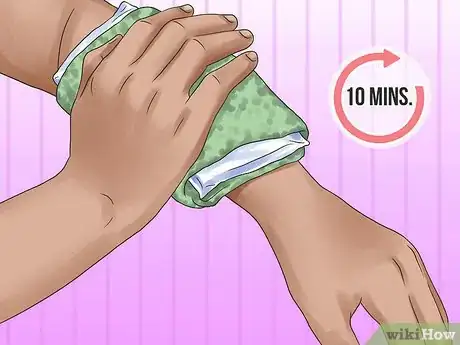

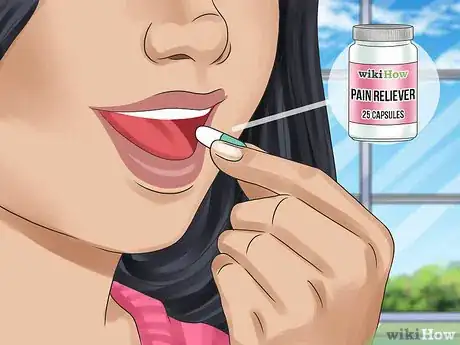



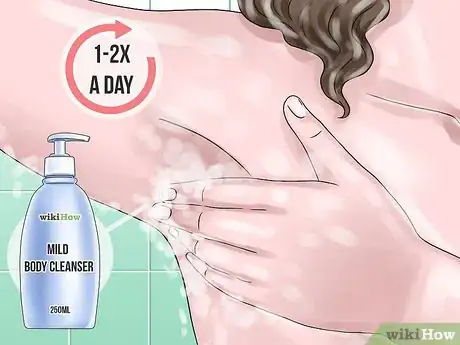

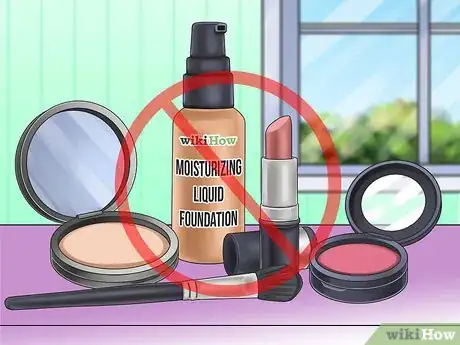


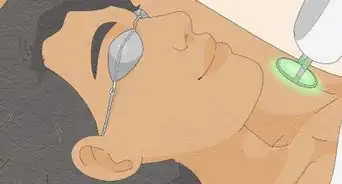





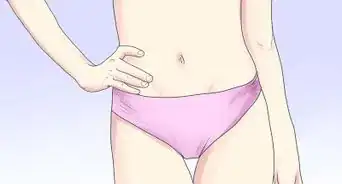
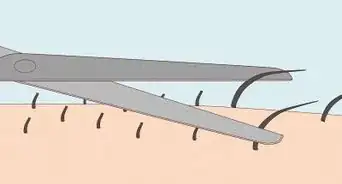











-Step-36.webp)


































